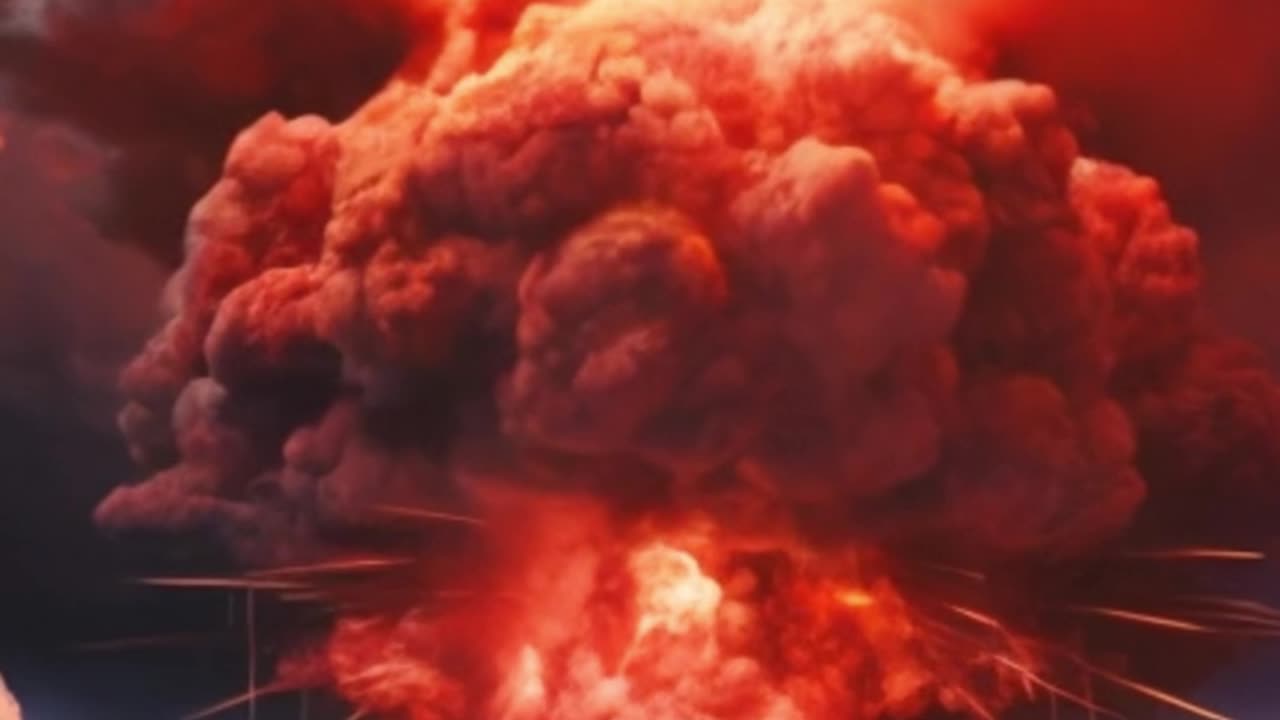Premium Only Content

When the Air Force Makes Mistakes While Transporting Nukes
The United States Air Force has a long history of being responsible for the transportation of nuclear weapons, a responsibility that carries with it a tremendous burden and risk. In fact, the Air Force has had numerous incidents in the past where accidents occurred during the transport of these powerful weapons, with potentially devastating consequences.
One of the most notable incidents involving the transport of a nuclear weapon occurred on March 10, 1956, when a B-47 bomber crashed near the Mediterranean island of Palomares, Spain. The plane was carrying two nuclear bombs as part of a training exercise, and during the flight, a mid-air collision with a tanker aircraft caused one of the bombs to fall into the sea. The bomb was later recovered intact, but the conventional explosives in its payload had detonated upon impact, spreading radioactive material over a wide area and causing widespread concern among local residents.
This incident was particularly alarming because it happened during the height of the Cold War, when tensions between the United States and the Soviet Union were at an all-time high. The thought of a nuclear weapon falling into the hands of the enemy was a nightmare scenario that many feared could trigger a global disaster. Fortunately, the nuclear core of the bomb had been removed before the flight, preventing a full-scale nuclear detonation.
But this was not the only time that the United States Air Force had a close call when transporting a nuclear weapon. On January 21, 1968, a B-52 bomber carrying four nuclear bombs crashed near Thule Air Base in Greenland. The plane had experienced a fire in its wing and was attempting an emergency landing when it crashed. In the process, one of the bombs fell from the plane and detonated upon impact, creating a large crater in the ice and releasing radioactive material into the environment.
This incident caused an international uproar, with the Danish government, who owned Greenland, demanding answers from the United States and questioning the safety of transporting nuclear weapons over their territory. The fallout from this incident also led to a complete overhaul of the safety protocols for transporting nuclear weapons.
These two accidents serve as a sobering reminder of the potential dangers and consequences of transporting nuclear weapons, and the tremendous responsibility that falls on the shoulders of the United States Air Force. Even with all the precautions and safety measures in place, accidents can still happen, and the consequences can be catastrophic.
In response to these incidents, the Air Force implemented stricter safety protocols, including increased training for personnel, enhanced communication and coordination among agencies, and improved transportation containers for nuclear weapons. Since then, there have been no major incidents involving the transportation of nuclear weapons by the United States Air Force.
But the fact remains that the risk is always present. The transportation of nuclear weapons is a delicate process that requires precise planning and flawless execution. Any mistake, no matter how small, can have devastating consequences. The Air Force continues to place a high priority on the safety and security of these powerful weapons, ensuring that they are transported with the utmost care and caution.
In conclusion, the United States Air Force has had two major accidents while transporting nuclear weapons, one in Spain in 1956 and another in Greenland in 1968. These incidents serve as a reminder of the potential dangers and consequences of transporting these powerful weapons. However, they have also led to significant improvements in the safety protocols and procedures for transporting nuclear weapons, ensuring that the risk of an accident is minimized as much as possible. The responsibility of transporting nuclear weapons will always be a challenging and crucial task for the Air Force, but it is one that they take very seriously.
-
 LIVE
LIVE
The Jimmy Dore Show
17 minutes agoIsrael STILL KILLING Gazans Despite Ceasefire! No Kings March Was A Complete Fraud! w/Katie Pasitney
2,023 watching -
 LIVE
LIVE
Kim Iversen
3 hours agoTrump EMBARRASSED: Gets Played by Israel AND China
1,306 watching -
 LIVE
LIVE
Side Scrollers Podcast
1 day ago🔴SIDE SCROLLERS FUND-A-THON🔴DAY 1🔴100% REVENUE HELPS CHANGE CULTURE!
872 watching -
 LIVE
LIVE
Tundra Tactical
3 hours ago $4.09 earnedThe Great Tundra Nation Gaming Stream!!! Featuring ThePiggNation
94 watching -
 LIVE
LIVE
Jamie Kennedy
16 hours agoAre We Being Harvested by Our Own Outrage? | Ep 227 HTBITY with Jamie Kennedy
64 watching -
 LIVE
LIVE
Wayne Allyn Root | WAR Zone
3 hours agoWatch LIVE: The War Zone Podcast with Wayne Allyn Root
33 watching -
 LIVE
LIVE
LFA TV
20 hours agoLIVE & BREAKING NEWS! | MONDAY 10/20/25
1,069 watching -
 LIVE
LIVE
freecastle
6 hours agoTAKE UP YOUR CROSS- Depart from evil and DO GOOD; seek PEACE and pursue it.
188 watching -
 1:11:14
1:11:14
vivafrei
3 hours agoAnother Attempt on Trump? False Flag "Right Wing? Fake News? Flawed Ostrich Warrant & MORE!
94.6K34 -
 1:49:23
1:49:23
The Quartering
4 hours agoAttack At Twitchcon, Sniper Nest For Trump Found, Israel BREAKS Ceasefire, Gov't Shutdown To End?
117K62